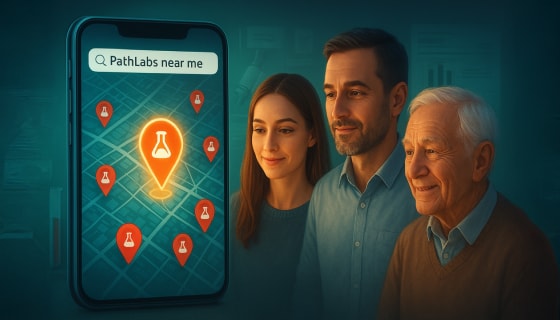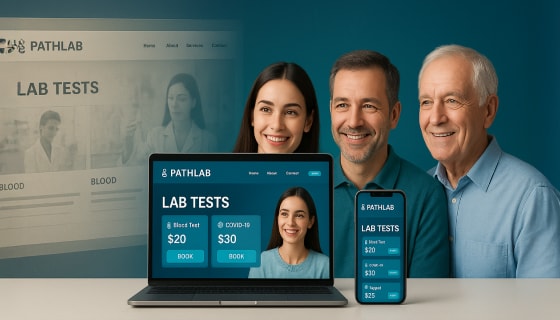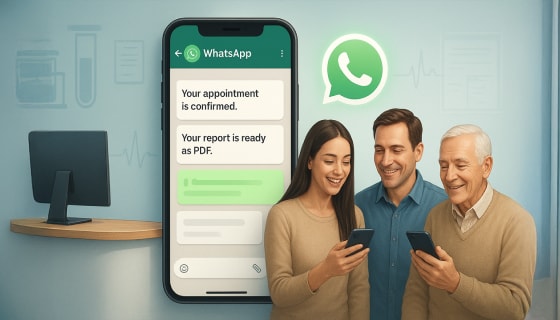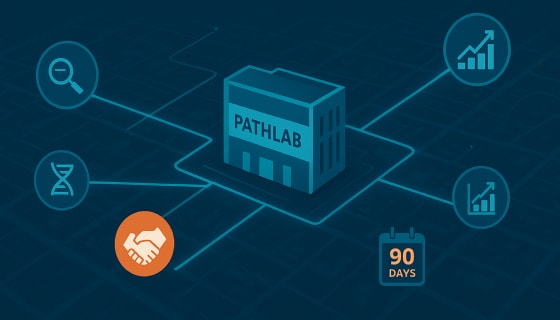Introduction:
In today’s hyper-connected world, patient engagement has evolved far beyond just sending appointment reminders. It now plays a pivotal role in building long-term loyalty, reducing no-shows, and ensuring that patients feel cared for at every stage of their healthcare journey. Whether it’s a new patient inquiry, a scheduled consultation, or ongoing care, the moments before and after a visit are just as crucial as the consultation itself. Effective engagement helps bridge the communication gap between patients and practitioners, reduces administrative burdens, and builds a trustworthy relationship that encourages patients to return.
The shift toward digital convenience and continuity of care has transformed how patients expect to be engaged. From WhatsApp messages and automated check-ins to educational newsletters and follow-up drip campaigns, the modern patient seeks seamless, value-driven communication that fits into their lifestyle. Healthcare practices that embrace smart engagement strategies not only boost retention but also position themselves as proactive, tech-savvy, and patient-first. As we step into 2025, it’s not just about staying in touch — it’s about staying relevant, responsive, and relational.
The Patient Engagement Funnel Explained
Patient engagement doesn’t happen all at once — it’s a journey that starts the moment a potential patient reaches out and continues long after their visit. This journey can be mapped through a Patient Engagement Funnel, which outlines each key touchpoint where communication, trust-building, and personalized care can make a significant impact. Understanding this funnel helps healthcare practices design smarter workflows, reduce drop-offs, and nurture repeat visits. Let’s break it down into five key stages:
Stage 1: From Curiosity to Connection – The Inquiry Phase
This is where a potential patient first interacts with your brand — through your website, Google Business Profile, social media, or ads. First impressions matter. Timely responses via chatbots, WhatsApp, or a contact form can make or break conversion. It’s essential to acknowledge their query quickly and guide them toward booking their first appointment.
Stage 2: Make It Easy – The Appointment Phase
Once a patient is ready to book, simplicity is everything. Whether through a booking link, app, or phone call, your scheduling system should be intuitive, mobile-friendly, and fast. Send confirmations and reminders via WhatsApp, SMS, or email — whichever channel they prefer. This not only reduces no-shows but also shows patients you respect their time.
Stage 3: Delivering the Experience – The Visit Phase
The actual visit is where trust is built. From front desk friendliness to the clinician’s attentiveness, every detail shapes how patients feel about your practice. But engagement doesn’t stop there — post-visit handouts, feedback forms, or a thank-you message can elevate the overall experience.
Stage 4: Don’t Let Them Forget – The Follow-Up Phase
After the visit, consistent and relevant follow-ups help patients stay on track with treatment, medication, or the next appointments. This can include educational content, check-in messages, or digital prescriptions. Patients are more likely to return when they feel remembered and supported.
Stage 5: Stay Top-of-Mind – The Re-engagement Phase
Weeks or months later, reactivating patients who haven’t returned is critical. Birthday wishes, seasonal health tips, or limited-time offers for check-ups can bring them back. Practices that nurture relationships over time turn one-time visits into lifelong loyalty.
Communication Channels That Work in 2025
The way patients prefer to communicate has undergone drastic evolution. In 2025, healthcare practices must go beyond traditional phone calls and embrace a multi-channel communication strategy that meets patients where they already are — on their smartphones. Whether it’s appointment reminders, post-visit instructions, or educational updates, choosing the right channel at the right time can dramatically improve patient satisfaction and reduce drop-offs. Let’s explore what’s working best today:
WhatsApp, SMS, or Email? Choose Based on Speed & Intent
- WhatsApp is perfect for instant, two-way communication. Use it for reminders, confirmations, follow-ups, or sending quick links (like feedback forms or location maps). Its read-receipt feature ensures messages aren’t missed.
- SMS is best for urgent, time-sensitive alerts — such as same-day appointment reminders or prescription pickups. Since it works without Wi-Fi or smartphones, it’s still widely effective.
- Email is ideal for detailed communication — educational content, newsletters, lab reports, or re-engagement campaigns. It’s also useful for keeping records and sending attachments securely.
When to Use Chatbots vs. Human Support
- Chatbots excel at handling FAQs, booking requests, and basic inquiries — especially after-hours or during high call volumes. They’re fast, scalable, and always available.
- But when it comes to sensitive health queries or billing concerns, a real human touch is irreplaceable. Practices that balance automation with personal care build stronger trust and loyalty.
Top Engagement Strategies for Healthcare Practices
Once the right communication channels are in place, the next step is using them effectively. In 2025, smart engagement means more than just sending reminders — it’s about creating touchpoints that feel helpful, thoughtful, and timely. Whether you’re trying to reduce no-shows or increase return visits, these proven strategies can help build trust and keep your practice top of mind.
Automate Appointment Reminders and Health Check-ins
Timely appointment reminders via SMS or WhatsApp reduce forgetfulness and give patients a chance to reschedule if needed — avoiding last-minute no-shows. Pair this with periodic check-in messages for patients undergoing treatment, recovery, or long-term care plans. These simple nudges can improve treatment adherence and show that your clinic cares beyond the visit.
Send Educational Drip Content That Builds Authority
Not all communication needs to be transactional. Educating your patients builds loyalty. A series of short, digestible messages or emails about managing conditions, staying healthy, or preparing for procedures can make patients feel supported and informed. Use automation to drip this content gradually, based on their diagnosis or treatment stage.
Make It Personal with Birthday & Anniversary Greetings
Everyone loves to be remembered. A simple message on their birthday or the anniversary of their first visit shows patients they’re more than just a number. These small personal touches strengthen emotional connection and often lead to repeat visits — especially when paired with a friendly check-up reminder or seasonal health offer.
Tools & Automation Platforms That Simplify Patient Engagement
Managing patient communication manually can be overwhelming — especially as your practice grows. That’s where automation tools come in. The right platforms help you stay connected without constantly checking your phone or inbox. From appointment reminders to follow-up campaigns, these tools enable a “set-it-and-forget-it” system that works in the background, freeing up your team’s time while keeping your patients engaged.
Practo Reach: Targeted Campaigns for Healthcare Audiences
Practo Reach allows you to run SMS and email campaigns specifically designed for healthcare practices. Whether it’s health tips, promotional check-up packages, or follow-up alerts, it helps you reach the right patients at the right time with full compliance and healthcare-centric templates.
Mailchimp: Automate Drip Campaigns and Newsletters
Mailchimp is a go-to tool for automating email flows — think appointment follow-ups, post-treatment care instructions, or monthly newsletters. With patient segmentation and analytics, it’s easy to personalize content and track what’s working. It’s HIPAA-friendly when configured right, making it a strong fit for practices in the US or UK too.
WhatsApp Business: Real-Time, Personalized Communication
WhatsApp Business is ideal for two-way messaging, appointment confirmations, and post-visit care. It supports templates, quick replies, and even catalog features for displaying services. Paired with a CRM, you can automate standard replies while escalating complex queries to staff when needed.
Tars: Convert Website Visitors into Booked Patients
Tars is a chatbot platform that integrates with your website and automates lead capture, appointment booking, and FAQs. It helps convert first-time visitors into active patients — especially during off-hours when staff aren’t available.
Set-It-and-Forget-It Systems: Scale Without Burnout
The true value of automation lies in consistency. When reminders, re-engagements, educational flows, and greetings are automatically triggered, your team can focus on care delivery rather than admin tasks. Most modern tools let you build workflows that respond to actions — like a missed appointment, a birthday, or time since the last visit.
Personalization Without Overwhelm: Getting It Right in Healthcare
Today’s patients expect communication that feels tailored to their needs — but without crossing the line into being intrusive or overwhelming. The key is responsible personalization: using the right patient data, in the right way, at the right time. Smart healthcare practices are shifting from generic messaging to segmented engagement, ensuring patients receive relevant information based on who they are and what care they need.
Use Patient Data Ethically and Transparently
When handling personal health data, trust is everything. Patients are more likely to engage when they know their information is safe and being used to enhance their care — not for spammy promotions. Make it clear what kind of data you collect (like age, treatment history, or last visit) and how it benefits them (like receiving reminders or relevant health tips).
Segment Communication by Patient Type or Service
Not every patient should receive the same message. Someone coming in for a routine dental cleaning doesn’t need the same content as someone undergoing physiotherapy. Segmenting patients based on their condition, visit frequency, or treatment type allows you to send more relevant and engaging messages — leading to better open rates and action.
Examples of Segments:
- New vs. returning patients
- Chronic care patients vs. one-time visitors
- Pediatric vs. geriatric patients
- Services like dermatology, physiotherapy, dental, etc.
Engagement Metrics to Track: Measure What Matters
Even the most well-planned engagement strategy is only effective if you can measure its impact. In 2025, healthcare practices that consistently track key engagement metrics are the ones that scale smarter, reduce drop-offs, and retain more patients over time. The goal isn’t just to send more messages — it’s to send the right ones that drive action and build trust. Here are the metrics every modern clinic should monitor:
Open & Click Rates: Are Your Messages Being Seen?
Whether you’re using email, WhatsApp, or SMS, tracking open and click-through rates tells you how effective your communication really is. If patients aren’t opening your appointment reminders or engaging with your newsletters, it might be time to tweak your messaging, timing, or subject lines.
No-Show Rate Reduction: The Ultimate ROI Indicator
One of the clearest signs of engagement success is a drop in no-show rates. If your reminders, confirmations, and reschedule options are working, your patients will show up more reliably. Combine this with smart follow-ups and check-ins to improve consistency in attendance over time
Return Visit Frequency: Are Patients Coming Back?
High-quality engagement should lead to repeat visits and ongoing care. If patients return for their next consultation, follow-up, or check-up without needing multiple reminders, your engagement strategy is doing its job. Use your CRM or practice management system to track repeat bookings over 3–6 month intervals.
Feedback Form Responses: Are You Building a Listening Loop?
Post-visit feedback is a goldmine. It helps you gauge patient satisfaction, improve service quality, and spot areas that need attention. A well-timed feedback form (sent via WhatsApp or email within 24 hours of the visit) often receives higher response rates than one sent days later.
Examples from Practices That Increased Retention
Nothing proves the power of patient engagement like real-world results. Across the globe, healthcare practices — from solo practitioners to multi-specialty clinics — have seen measurable improvements in retention and satisfaction by implementing smart engagement strategies. These examples highlight how small changes in communication and follow-up can lead to big gains in patient loyalty and clinic performance.
A Family Clinic Reduced No-Shows by 40% Using WhatsApp Reminders
A mid-sized family clinic in Ahmedabad struggled with frequent no-shows, especially among first-time patients. After integrating WhatsApp Business API with their appointment system, they started sending personalized confirmations, reminders, and rescheduling options. The result? No-show rates dropped from 28% to just 17% within 3 months, while front desk calls reduced significantly.
A Dental Practice Saw 30% More Return Visits with Birthday Campaigns
A dental clinic in London began sending automated birthday wishes with a discount on cleanings or whitening sessions. This simple gesture brought back lapsed patients who hadn’t booked in over a year — leading to a 30% increase in repeat bookings during birthday months.
A Mental Health Center Improved Engagement with Educational Drip Content
A US-based mental wellness center launched a weekly email series for patients post-therapy. The content included mindfulness tips, journaling prompts, and encouragement. With just 5 emails per patient, they saw increased follow-up bookings and a 22% uptick in positive feedback form submissions.
A Physiotherapy Chain Used Feedback Forms to Improve Their Patient Journey
After every visit, a physiotherapy chain in Mumbai sent a 3-question feedback form via SMS. They achieved a 48% response rate and used the data to retrain reception staff and reduce waiting room time. This helped lift their Google ratings and improve patient retention across all branches.
Checklist: Is Your Engagement System Working?
It’s easy to assume your patient communication is “good enough” — until you start losing patients to poor follow-ups, unanswered inquiries, or generic messages. This self-audit checklist helps you quickly assess if your current engagement system is truly working or if there are gaps that need attention. Use this as an internal guide with your team to identify what’s working and what needs upgrading.
1. Are inquiries being responded to within 5–15 minutes?
Patients expect quick responses, especially when reaching out online. If your team or chatbot takes too long to reply, you risk losing them to another clinic.
2. Do you offer multiple communication channels?
If you’re only relying on phone calls or emails, you’re missing out. A strong system includes WhatsApp, SMS, and email options — letting patients choose what works for them.
3. Are appointment confirmations and reminders automated?
Manual follow-ups are time-consuming and error-prone. Confirmations and reminders should be automated, timely, and personalized to reduce no-shows.
4. Do you segment your patients for targeted communication?
Sending the same message to all patients isn’t effective. You should be able to tailor messages based on patient type, treatment, or visit history.
5. Are you running regular re-engagement campaigns?
If you’re not reaching out to patients who haven’t visited in 3–6 months, you’re leaving revenue and relationships on the table.
6. Do you send value-based content — not just promotional messages?
Educational tips, wellness checklists, or condition-specific advice help build trust and authority. If all your messages are reminders or offers, patients may tune out.
7. Are you tracking engagement metrics?
If you can’t see your open rates, no-show trends, or feedback data, you’re operating blindly. Metrics help refine and improve communication over time.
8. Is there a consistent feedback loop in place?
Post-visit feedback forms and periodic satisfaction check-ins let patients feel heard — and show where you can improve operations or care delivery.
If you answered “no” to more than 2–3 of these, your engagement system likely needs optimization. Fortunately, it’s never too late to start — and even small improvements can drive better loyalty and fewer missed appointments.
Conclusion
In an era where patients expect seamless, personalized, and timely communication, having a smart engagement system is no longer optional — it’s essential. From the first inquiry to long-term retention, every interaction shapes how patients perceive your practice. By understanding the patient engagement funnel, using the right communication channels, and leveraging automation tools, healthcare providers can drastically reduce no-shows, boost repeat visits, and build lasting patient loyalty.
But engagement is not just about technology — it’s about showing patients that you care, even outside the clinic walls. The most successful practices combine automation with empathy, personalization with privacy, and consistency with convenience. If you’re ready to modernize your approach and create a better patient experience, now is the time to take the first step.













